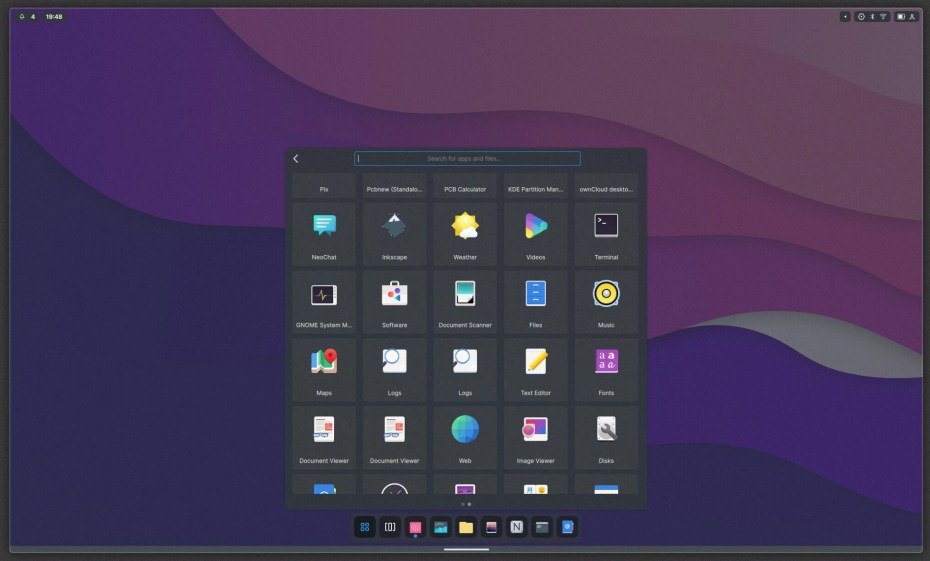The Nitrux development team unveiled today their Christmas surprise for the Linux community, a new convergent desktop shell for Linux desktops, phones, and tablets, called Maui Shell.
If you’re reading 9to5Linux.com regularly, you probably know already that the makers of the Debian-based Nitrux distribution also work on developing a set of in-house built apps created with the Maui Kit, called Maui Apps.
Well, today Nitrux introduces a brand new shell for the Linux desktop, called Maui Shell, which can be converged to also work on mobiles devices, such as Linux phones and tablets.
Maui Shell consists of two main components, Cask as the shell container and Zpace as the composer. Think of them as GNOME Shell and Mutter for the GNOME desktop environment.
Being the shell layer, Cask takes care of the top panel, which very discreet and clean placed at the top of the screen, the launcher, which is presented to the user as a pop-up card in the center of the screen just above the dock, similar to System76’s Application Library launcher in Pop!_OS Linux 21.10.
In addition, Cask takes care of all other desktop elements that the user interacts with, such as notifications, pop-ups, cards, and the dock. The Maui Shell also offers a notification center à la macOS 10.15 Catalina.
Since Maui Shell is a convergent desktop shell, it will look amazing on smaller screens, such as those of Linux phones and tablets. On tablet form factor, Maui Shell’s windows don’t have decorations and a presented in full-screen, and it can show two windows per workspace, side by side or stacked.
On the phone form factor, the launcher and panel cards take all the available space. Users can slide from the left side of the top panel to open notifications and the calendar, or from the right side to open the status and quick settings toggles.
The second component, Zpace, takes care of all the under-the-hood work for the convergent desktop shell. It uses the Qt Wayland Compositor API, which means that it runs on top of Wayland, but it also supports X11.
Zspace supports multiple workspaces and handles window positioning on the different form factors presented above. Workspaces support an unlimited number of windows that support client-side decorations (CSD) and can be floating and stackable.
If you want to take Maui Shell for a test drive, you can download the Nitrux 1.8 distribution release, which also landed today with a lot of goodies, just in time for the Christmas holidays.
However, don’t get too excited because there’s still a lot of work to be done before Maui Shell can become a viable alternative to popular desktop environments like KDE Plasma or GNOME. For now, it’s just a simple startup program to be used in a standalone session (X11 or Wayland), and it doesn’t feature a session manager.
It also lacks support for multi-screen setups, a control center to adjust various settings, as well as a XWayland shell extension. The devs are currently working on an XDG-shell extension, Bluetooth support, PulseAudio support, network toggles, MPRIs control, drag and drop support, dock and panels, launcher, and workspaces.
The first stable release of Maui Shell will arrive in fall 2022.
Last updated 2 years ago





